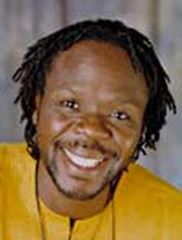Resource 4: Preparing lessons on life stories
![]() Background information / subject knowledge for teacher
Background information / subject knowledge for teacher
Collect the resources that you will need. This may take some time, but the newspapers, magazines and comics that you collect could be used for many different kinds of language lessons in addition to those on reading and writing life stories. Some pupils may be able to bring newspapers and magazines from home, so ask them to ask their families for permission to do so. Ask your colleagues and friends to contribute newspapers and magazines that they have finished with. In some countries, newspaper and magazine publishers may be prepared to donate copies to your school. Some NGOs also have excellent publications.
Before you begin these lessons you must have enough reading material about a range of well-known people for each group of pupils to work with.
- Copy on to large sheets of paper or cardboard or on to your chalkboard the life story of Samite (biography below) OR another life story of your choice that is written in fairly simple language.
- Make a list of common features of life stories to discuss with your pupils. These include:
- (i) usually telling the story in a time sequence from early years to later years in the person’s life;
- (ii) highlighting the special achievements of the person’s life;
- (iii) details of something particularly interesting or amusing about the person’s life.
Now you are ready to begin the lesson!
Guiding pupils while they write life stories
While pupils are working in their groups, move round the room to check that they understand the task and are able to find articles to use. You could write a ‘checklist’ on the chalkboard to guide pupils in their writing. For example:
- name(s) of the person;
- place of birth;
- family details;
- ‘history’ – school days, first achievements, later achievements;
- interesting/sad/amusing things that have happened in the person’s life.
Encourage pupils to think about the order in which to write the information about the person and to use some of their own words. They should not just copy from the articles.
Samite’s life story (biography)

Background
Samite was born and raised in Uganda, where his grandfather taught him to play a traditional African flute before his fingers were long enough to cover all the sound holes. His primary schooling was within the King's Courtyard where the royal musicians played for the king. That daily influence permanently instilled within young Samite, the rhythms and patterns of the traditional music of his people the Baganda. Recognising his talents, a high school teacher in Kampala put a western flute in his hands, putting him on the path to become one of the most highly acclaimed flutists in East Africa.
He performed frequently to enthusiastic audiences throughout Uganda until 1982, when he was forced to flee to Kenya as a political refugee where he played with the Bacchus Club Jazz Band and the popular African Heritage Band.
Increasingly drawn to instruments and rhythms from the traditional Ugandan music scene, he eventually played solo at the Mount Kenya Safari Club in Nairobi. Delivering his mellifluous vocals in his mother tongue, Luganda, he mesmerised audiences with original compositions played on kalimba (finger-piano), marimba (wooden xylophone), litungu (a seven-stringed Kenyan instrument) and various flutes; traditional and Western.
Samite immigrated to the United States in 1987, and now makes his home in Ithaca, New York. He has performed in a broad variety of venues throughout the county and his music is enjoyed regularly by radio listeners nationwide. Tunula Eno, his sixth CD, reached #2 in the CMJ Music World Chart within the first month of its 2003 release. He performed live on the nationally syndicated radio programme ‘Echoes’, and recorded a live performance for the Ngoma Channel on XM Satellite Radio in Washington, DC. His live performance on the nationally syndicated show E-Town has been broadcasted on over 120 stations, as has his performance on nationally syndicated World Vision Radio.
In 2002, Samite founded Musicians for World Harmony (http://www.musiciansforworldharmony.org) – a not-for-profit organisation dedicated to enabling musicians throughout the world to share their music to promote peace, understanding and harmony among peoples, with a special emphasis on the displaced or distressed who can benefit most from the healing power of music. In that capacity he travels as often as possible, with as many people as care to join him, to sing, play music and exchange stories with severely disadvantaged children.
Samite was a featured performer at MaharishiUniversity’s National Conference on Peace at the MaharishiUniversity in Fairfield, Iowa, in 2004. On 2 June 2006, he joined Paul Winter, Wyclef Jean, The African Children's Choir, and other skilled musicians at the United Nations General Assembly conference ‘Uniting the World against AIDS’.
Embalasasa, Samite’s seventh and newest CD, was recently released by Triloka/Artemis. It is named after a beautifully coloured, yet highly poisonous, lizard Samite recalls from his childhood in the Ugandan countryside. ‘It is a symbol,’ he explains, ‘of the modern embalasasa, AIDS, a disease transmitted through the most beautiful, vibrant and natural act – sex.’ Billboard magazine calls Embalasasa a ‘superbly chilled-out piece of work … [with] moving and seductive melodies’.
Samite is currently composing music for a documentary film on the 2004 Nobel Peace Prize Winner, Wangari Mathai of Kenya. This will also be released as his eighth CD.
His goal is to open people’s minds and hearts to the common threads of human concerns, conveying optimism through stories and song.
Taken from:http://www.samite.com
Resource 3: Praise poems and stories



